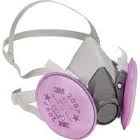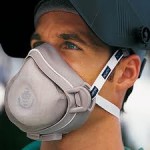Mon 26 Sep 2011
Welding with respirators?
Posted by admin under Air Monitoring, Management, Personal Protective Equip (PPE), Respirators, Stainless Steel, Welding
[2] Comments
 During mild steel welding I very rarely see respirators being worn. I believe this to be “standard practice” (the act of NOT wearing a respirator). However, is this a good idea?
During mild steel welding I very rarely see respirators being worn. I believe this to be “standard practice” (the act of NOT wearing a respirator). However, is this a good idea?
The correct answer is: Â It depends.
Explanation:
- I actually think during common mild steel welding, respirators should not usually be required. My experience in air monitoring has demonstrated that most “average” levels are well within occupational exposure levels (OELs).  While sampling under the hood (placing the filterpiece inside the welding hood), the flash hood protects from a lot of exposure. Most of the particulate that is seen-visually is iron.
Caveats:
- “average” welding changes everyday. What is average at one fabrication shop may be totally different from another. Each project may have different welding exposures. Welding inside a 36 inch tube is different than in an open field. You should roughly know what airborne levels you have at your site.
- If the welding contains metals other than what is in typical mild steel (and many times there are other stuff), the air levels can vary. Steel nowadays is so much recycled metal that there is a huge variability in the makeup of new product. Exotics (stainless steel, etc) Â and known contaminants (leaded paint, coatings, oils, etc) should be treated very different.
- Long term exposures from metals might be a real health concern. There aren’t many metals in mild steel that you need to inhale.
To wear respirators is a good decision. Conditions change and, in construction, this might be every hour. When the project needs to be completed quickly, most welders will not run to the store for a respirator. It is nice to be prepared.
My advice is to issue half-face tight fitting respirators with HEPA (high efficiency particulate air) filters. Train employees WHEN to use them and, if you have safety culture that permits it, trust them to use it when conditions warrant their use.

this is a very cool idea. as a new apprentice i have been looking into lung protection.
i would be really interested in any part numbers that you could provide for this project.
Great survey, I like your site.